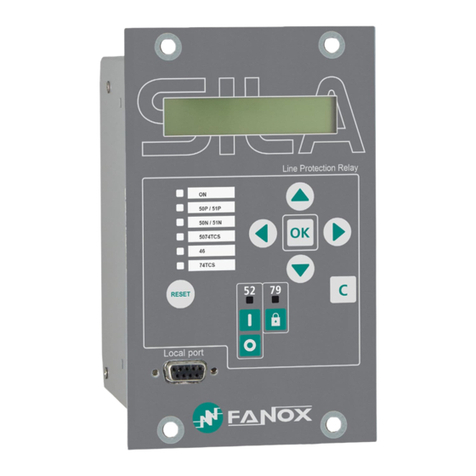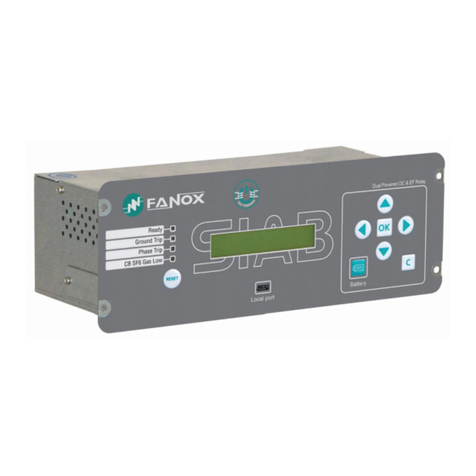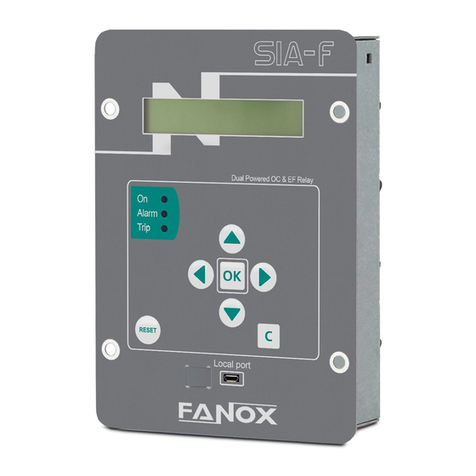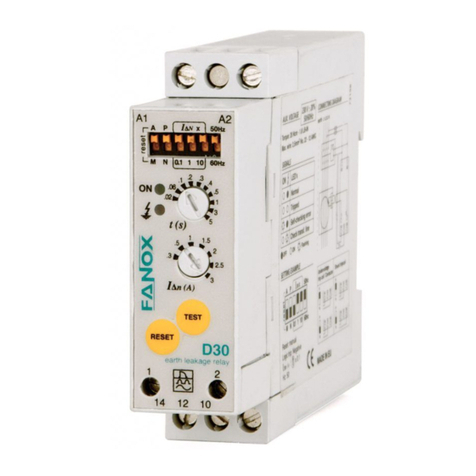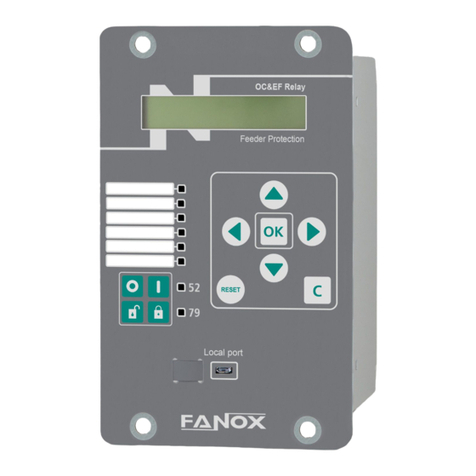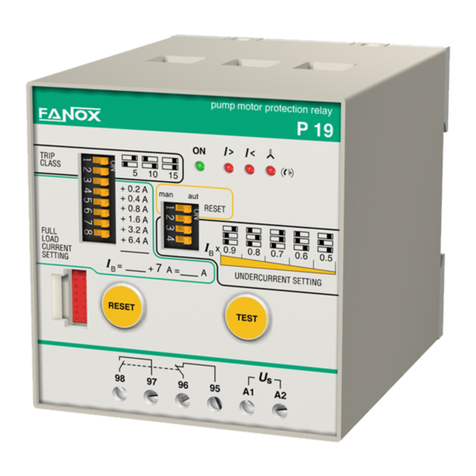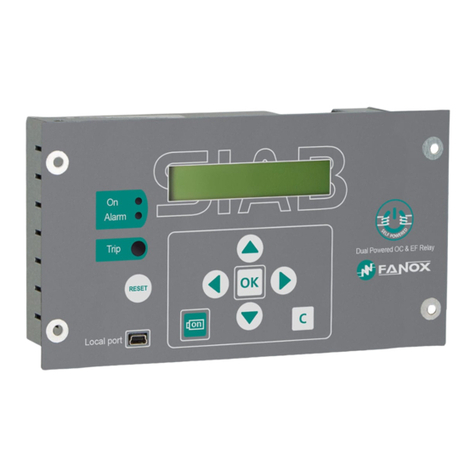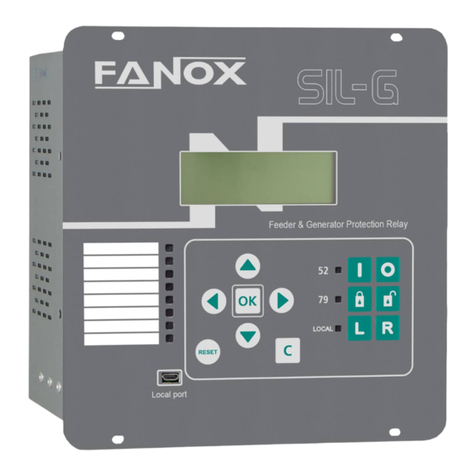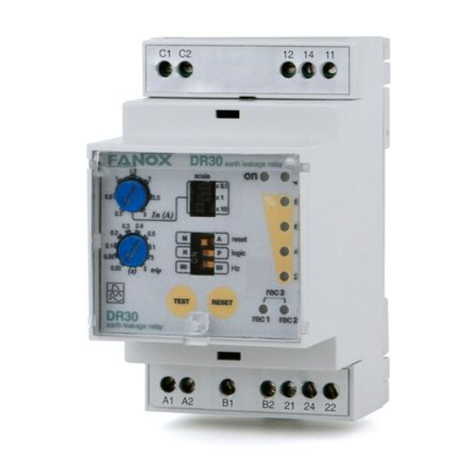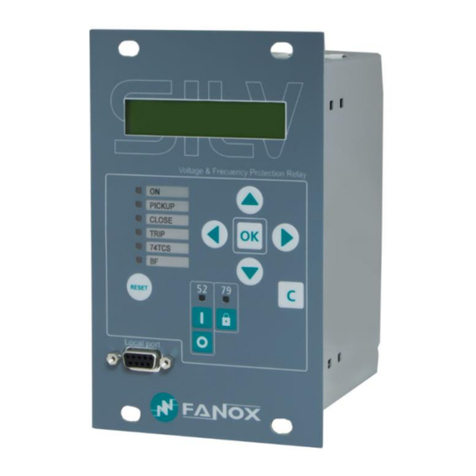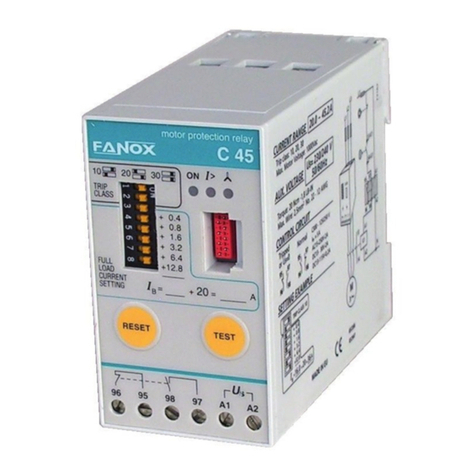www.fanox.com Installation_Guide_SIAB000B0010AA_Rev. 03 2 / 32
1...... RECEPTION & INSTALLATION.......................................................................................... 3
1.1. Relay unpacking.............................................................................................................3
1.2. Relay verification............................................................................................................3
1.3. Powering the relay up....................................................................................................4
1.4. Relay intallation.............................................................................................................. 6
1.5. Relay rear part ................................................................................................................ 7
1.6. Connection diagram.......................................................................................................7
2...... USER INTERFACE..............................................................................................................8
2.1. Relay front part............................................................................................................... 8
2.2. Bistable magnetic indicator (Flag) ...............................................................................8
2.3. LED indicators................................................................................................................ 8
2.4. How to install SICOMM software .................................................................................. 8
2.5. Setting-up the session: Password and access levels................................................ 9
3...... FUNCTIONAL DIAGRAM ....................................................................................................9
4...... TECHNICAL SPECIFICATIONS........................................................................................10
4.1. IEC60255-151 Curves...................................................................................................12
4.2. IEEE Curves..................................................................................................................12
5...... SPECIFIC CURRENT TRANSFORMERS.........................................................................13
5.1. Test Winding.................................................................................................................14
6...... OPENING MECHANISM....................................................................................................14
7...... FLOWCHART.....................................................................................................................15
7.1. Test menu......................................................................................................................15
7.2. Direct Access................................................................................................................15
7.3. Menus............................................................................................................................17
8...... COMMISIONING ................................................................................................................ 23
8.1. Thermal resistance....................................................................................................... 23
8.2. Self powering................................................................................................................25
8.3. Measurements .............................................................................................................. 26
8.4. Protection functions .................................................................................................... 26
9...... SIAB000B0010AA REGISTRY..........................................................................................30
